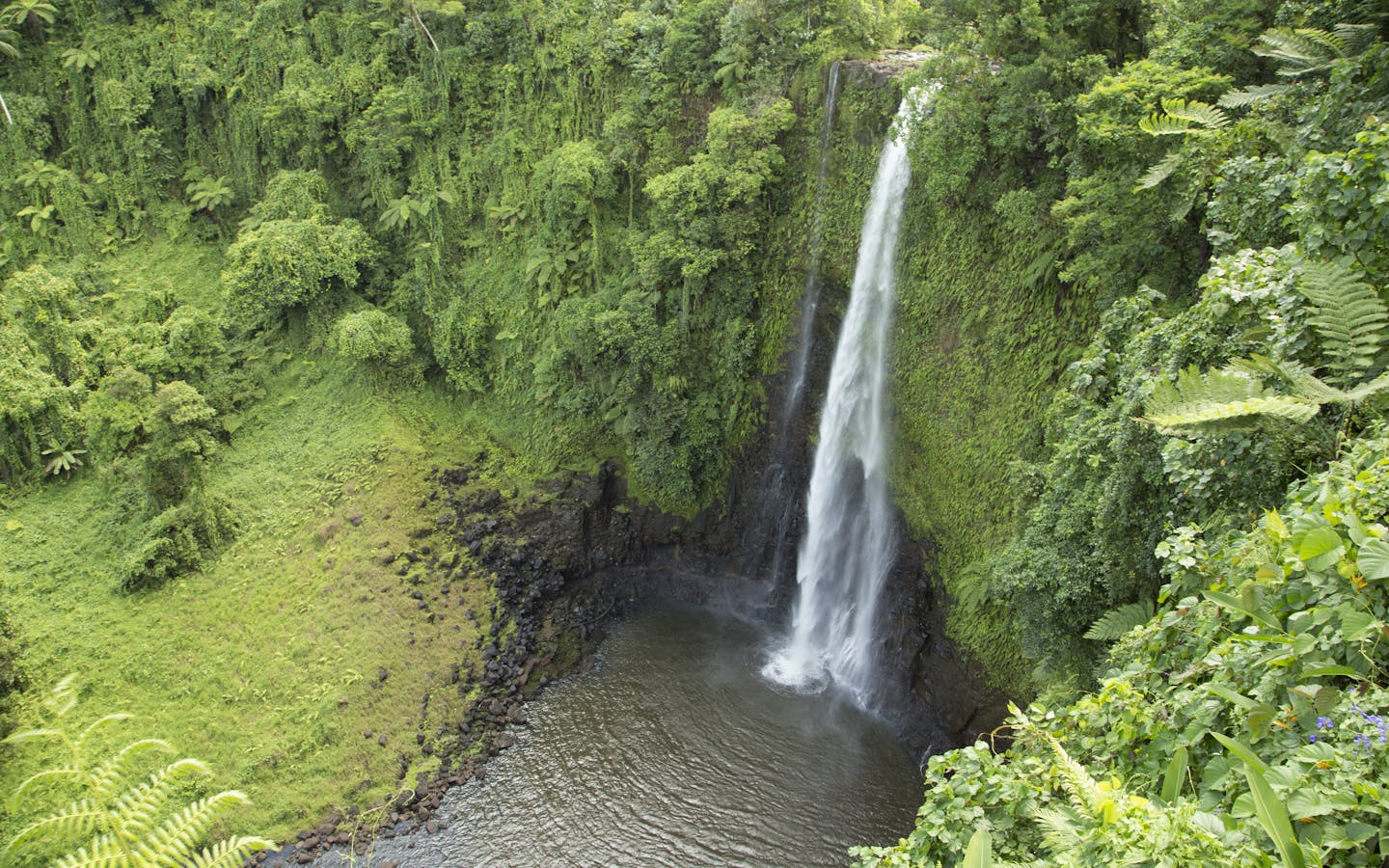Conservation International has been working in Samoa since 2006. We are working to achieve a healthy, prosperous world in which societies are forever committed to caring for and valuing nature. This is for the long-term benefit of people and all life on Earth.
Dating back more than 3,000 years, Samoan culture is rooted in a respect for and reliance on the environment. Traditional livelihoods such as fishing, handicraft, agriculture and, more recently, tourism are all dependent on natural resources.
Since 2006, Conservation International has worked with the Samoa government and local communities to conserve critical forest ecosystems and support sustainable management of their oceans. We help societies responsibly and sustainably care for their natural resources, and recognize that the voyaging culture of the Samoa is inextricably linked with nature.
Across the world, Conservation International works with 2,000+ partners in more than 30 countries. We have helped establish 1,200 protected areas across 78 countries and protected more than 730 million hectares of land, marine and coastal areas.
The issues
Coastal fisheries are an integral part of life in Samoa, forming the basis of livelihoods for many coastal communities. In the 2013 Samoa State of Environment Report, overfishing in the inshore areas of Samoa was identified as a major threat to the integrity and sustainability of coastal resources and coral reefs. Offshore overfishing is increasingly becoming an issue as well. Projections in Conservation International’s Pacific tuna report indicated that bigeye tuna stocks will soon be overexploited in the Pacific, and there are increasing calls for restricting the fishing of other tuna species. If business continues as usual, as many as 75% of the region’s coastal fisheries could be unable to meet local food needs by 2030.
Within Samoa’s islands, there is a diverse range of ecosystems that support endemic and highly endangered species. However, unsustainable development, invasive species and land clearance associated with commercial and subsistence agriculture all threaten to unsettle nature’s longstanding balance in Samoa.
Low-lying island nations contribute little to greenhouse gas emissions, but they’re highly vulnerable to the effects of climate change — warming temperatures, ocean acidification, and sea level rise. For every 1°C (1.8°F) increase in temperature, we will eventually see a 2.3-meter (7.5-foot) rise in sea level.The sea absorbs 30% of the planet’s carbon. As CO2 levels in the atmosphere rise due to human activity, the ocean becomes more acidic, causing some coral reefs to die. Their damage and loss, from both sea level rise and ocean acidification, threatens all island nations in the region.
Keep up with us
BLOG
Conservation News
Learn how we're working to preserve one of the world's most biodiverse landscapes.
REPORT
Biological Rapid Assessment Programme
An innovative project to study biodiversity in Samoa's natural heartland.
COMMUNITY
Follow us on social media
Join us and stay updated with our latest news, conservation action and more.

